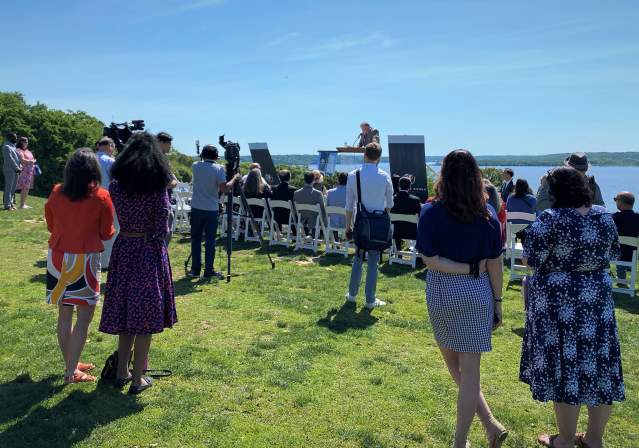Fairfax County, VA - February 11, 2013 - Visit Fairfax celebrates the rich history of the African American experience in the National Capital Region, from the 18th century to today, during Black History Month and throughout the year. Starting with the Magical History Tour: African American Heritage Trail (http://bit.ly/XXpYPU), which maps out one, two and five-day itineraries featuring more than 20 significant sites and attractions throughout the area, Visit Fairfax and its partners offer visitors the opportunity to journey through, and reflect on, the struggles and vital contributions African Americans have made throughout our history.
"The African American experience is intricately entwined in the rich tapestry of Fairfax County's history," says Barry Biggar, President and CEO of Visit Fairfax. "We are fortunate to have access to a wealth of heritage sites and museums for visitors and residents to experience in order to gain knowledge and appreciation of the journey African Americans have made from slavery to the realization of one man's dream."
Just a short drive from Washington, DC, Fairfax County is home to several memorable places, including:
Gum Springs - (http://gumspringsmuseum.blogspot.com) - located just outside of Alexandria, Virginia, Gum Springs is a small hamlet of 2,500 residents established in 1833 by West Ford, a freed slave who lived on nearby Mount Vernon Estate. The town became a haven for former slaves, both freedmen and runaways, creating a self-sufficient community that soon thrived into the oldest African American community in the United States.
George Washington's Mount Vernon Estate & Gardens - (www.mountvernon.org) - located on the shores of the Potomac River, Mount Vernon is the preserved home of the nation's first president. In addition to more than 50 acres of gardens, an interactive museum, and the tombs of both George and Martha Washington, the estate serves as one of the nation's memorials to the contributions of 18th-century slaves and showcases an honest account of the era in which Washington lived, including slavery.
Gunston Hall - (www.gunstonhall.org) - just up the road from Mount Vernon is George Mason's Gunston Hall, home of the outspoken proponent of civil liberties, author of Virginia's Declaration of Rights, and former slave owner. This sprawling plantation includes restored structures and interpretative actors throughout the grounds that depict the varying parts needed to make the 18th-century household work.
The Laurel Grove School - (http://laurelgroveschool.com) - closed in 1932, the Laurel Grove School has been restored by family descendants and interested citizens to tell the unique story of the community's refusal to narrow its ambitions. Of all the colored schools that opened in the region, only Laurel Grove exists today as the prized possession of a striving people serving as a "living museum," available to area schools and the general public.
Sully Historic Site - (www.fairfaxcounty.gov/parks/sully-historic-site/) - on the National Register for Historic Places, Sully, which was completed in 1799 by Richard Bland Lee, includes original outbuildings, representative slave quarters and gardens in addition to the main house. Guided tours highlight the early 19th century life of the family, their tenant farmers and enslaved African Americans.
Other sites of interest include the Alexandria Black History Museum and the Watson Reading Room, Smithsonian Air & Space Museum's Stephen F. Udvar-Hazy Center, Cedar Hill and the Frederick Douglas Historical Site, African American Civil War Memorial and Museum, Freedmen's Memorial Monument and the Martin Luther King, Jr. Memorial across the river in Washington, DC.
Visit Fairfax is the official tourism organization for Fairfax County, Virginia. Charged with destination marketing and tourism promotion, it is directed by many of the County's top tourism and hospitality leaders. For more information, including special deals and events, please visit www.fxva.com.
# # #
